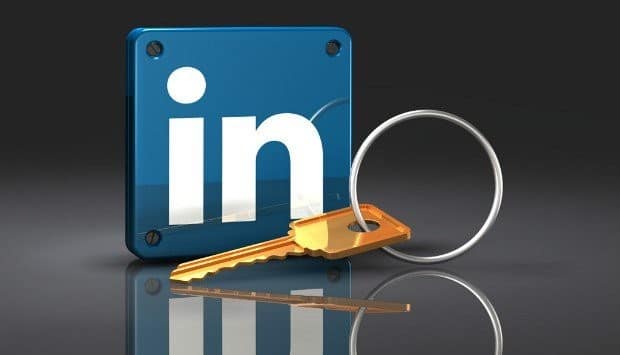When I initially started using LinkedIn, I was excited to connect with professionals and grow my network. However, I quickly learned that keeping some sort of secrecy was critical to safeguarding my personal information. In this article, I’ll walk you through the procedures to make your LinkedIn profile private.
Privacy on social networking platforms is becoming a rising concern, particularly among professionals who use LinkedIn to expand their networks and display their jobs. According to a Pew Research Centre research from 2023, 81% of users are concerned about how their data is gathered and used. Understanding LinkedIn’s privacy options will help you manage your online presence more efficiently. Let’s look at the essential factors of making your LinkedIn profile private.
Why Privacy on LinkedIn Matters
As someone who has spent years navigating the work world, I recognize the necessity of managing your internet profile. LinkedIn is an effective networking tool, but without the correct privacy settings, your personal information may be exposed to unwelcome scrutiny.
#1. Protecting Personal Information
You may manage who has access to your personal information, such as your email address and phone number, by changing your privacy settings. This is critical for avoiding spam and unwanted solicitations.
#2. Managing Professional Boundaries
Maintaining privacy allows you to maintain professional boundaries by ensuring that only relevant connections and possible employers may view your profile. This helps to avoid confrontations and preserve a professional image.
Can You Make Your LinkedIn Profile Private?
The first question is if it is possible to hide your LinkedIn profile. The short answer is yes: you can make your LinkedIn profile private and hide it from view. In truth, LinkedIn offers a variety of privacy settings to choose from.
You’ll be relieved to know that hiding your profile isn’t difficult if you follow the instructions outlined in the next section.
How to Make LinkedIn Private: Step-by-Step Guide
Step #1: Access privacy settings.
- Log In: Open LinkedIn and sign in to your account.
- Profile Icon: Click the profile icon in the upper right area.
- Select “Settings & Privacy” from the dropdown menu.
Step #2: Change Profile Visibility
- Visibility Tab: Select the “Visibility” tab from the left-hand side.
- Profile Viewing Options: Under “Profile Viewing Options,” choose how you want your profile to look when you visit others’ profiles (public, semi-private, or private).
- Edit Your Public Profile: To manage what is accessible to non-LinkedIn users, click “Edit your public profile.”
Step #3: Control Who Can View Your Activity
- Activity Settings: Click the “Visibility” tab and select “Visibility of your LinkedIn activity.”
- Profile Updates: You can specify who can view your profile updates, network ads, and other activities.
Step #4: Manage Data Sharing and Communication
- Data Sharing with Third Parties: Under the “Data Privacy” tab, change the settings to restrict data sharing with third parties.
- Communication Settings: In the “Communications” page, you can specify who can send you messages and invitations.
Advanced Privacy Tips
#1. Customize the Public Profile
You can specify which areas are shown when altering your public profile settings. For example, you may want to hide your contact information while displaying your summary and experience.
#2. Use Private Mode to View Profiles
When researching competitors or future employers, use private browsing mode to avoid leaving a trail.
#3. Limit data sharing
To prevent the misuse of your information, opt out of data sharing with third-party apps and services.
Template mention: Download our free LinkedIn Privacy Settings Checklist to ensure you’ve secured your profile completely.
Common Privacy Mistakes To Avoid
Protecting your privacy on LinkedIn requires more than just the first setup. Here are some frequent faults to look out for and ways to avoid them:
#1. Ignoring Privacy Updates
LinkedIn modifies its privacy and service agreements regularly. Failure to stay updated about these changes may reveal your profile.
Why it matters:
Privacy updates frequently include new settings or changes that may affect the visibility of your information. Ignoring these changes may indicate that your profile is more public than you believe.
To avoid this mistake, review your privacy settings regularly (every few months).
- Stay Informed: To stay up to date on any changes, subscribe to LinkedIn’s blog or follow its updates.
- Enable Notifications: In your LinkedIn settings, enable notifications for privacy updates so that you are notified anytime something changes.
Example: LinkedIn may implement a new feature that automatically shares your activities unless you opt-out. Regularly monitoring your settings allows you to disable such features if they do not meet your privacy requirements.
#2. Disregarding Connection Requests
Being too liberal with connection requests can result in privacy breaches. Accepting connections from unknown or untrustworthy sources may expose your personal and professional information to unauthorized parties.
Why it matters:
LinkedIn connections have access to a large amount of your profile information, including changes, shared posts, and, in certain cases, contact details. Unverified connections may misuse this information.
To Avoid This Mistake:
- Verify Connections: Before accepting a connection request, evaluate the person’s profile, mutual connections, and professional history.
- Set the connection criteria: Determine what criteria potential connections must meet, such as being in the same industry or sharing shared connections.
- Report Suspicious Activities: If you get a suspicious connection request, please report it to LinkedIn for examination.
Example: I once got a connection request from someone who claimed to be a recruiter. After more investigation, I discovered irregularities in their profile and mutual connections that did not fit up, so I denied the request and reported the profile.
#3. Sharing Too Much Information
Oversharing on LinkedIn can mistakenly reveal critical information. It’s critical to strike a balance between being informative and respecting privacy.
Why it matters:
Malicious use of detailed personal information is possible. For example, disclosing your whole career history, including exact dates and projects, can expose too much information to potential fraudsters.
To avoid this mistake, limit personal information such as home address, project specifics, and contact numbers.
- Review the Profile Sections: Ensure that each element of your profile contains only the relevant information. For example, your summary should highlight professional successes rather than irrelevant personal experiences.
- Control the Post Content: When sharing content, think about who might see the information. Avoid disclosing critical company information or personal plans in public.
Example: I once saw a coworker write on LinkedIn about their impending holiday plans, including dates and locations. This type of material is best exchanged privately to avoid security hazards.
How To Make the Most of Private Mode LinkedIn
There’s a lot you can accomplish in LinkedIn private mode.
#1. Build Your Network
If you’ve recently joined LinkedIn, you might want to look around and enhance your profile. It will be easier to remain anonymous while doing this. Don’t connect with many folks till your profile is complete.
They may be hesitant to interact with you if they do not understand your strengths and how you might assist them. So, keep anonymous and browse the profiles of others in your industry, take notes, develop your profile, and then go public to expand your connections.
#2. Generate leads
The most effective technique to generate leads is to start with a cold audience. A cold audience consists of folks who are absolutely ignorant of your content. When doing so, it is advisable to conceal the fact that you are viewing their profile and maybe messaging them.
You can make your profile visible once you’ve identified the leads or persons to whom you want to send messages and know what you want to say. Then, when you visit their profile and send a connecting message, they’ll know who you are and what you’ve seen.
#3. Competition and Option Research
If you are looking at your rivals or exploring alternative career opportunities while still working, you may wish to keep your visits private. You don’t want your competition to know you’re spying on them, or your boss to know you’re seeking new chances.
Can Others See Me in Private Mode?
Your identity remains hidden when you explore profiles on LinkedIn in private mode. The profile owner will just notice that “1 LinkedIn member” viewed their profile, with no personal information about you. This anonymity enables you to conduct research or see profiles quietly.
What Happens During Private Mode on LinkedIn?
LinkedIn’s private mode ensures that no personal information about you is exposed to the profiles you visit. This includes your name, headline, and any other personally identifiable information. This is especially handy for professionals performing competitive research or job looking without disclosing their identity.
- Private Mode: Complete anonymity; viewers are only aware that an anonymous LinkedIn member viewed their profile.
- Semi-Private Mode: Only your work title and company may be displayed, not your name.
Example: When I was pondering a career shift, I used private mode to look up possible employers’ profiles without informing them.
Can LinkedIn Premium Users View Private Mode Viewers?
No, LinkedIn premium members cannot see the profiles of anyone who viewed them in private mode. This assures that your browsing is confidential, independent of the profile owner’s membership level.
What Can I See If I Look at Someone’s LinkedIn Profile?
Yes, unless you have private browsing enabled. If you are not in private mode, LinkedIn will tell users when you view their profile by displaying your name, headline, and other profile information.
Example: When I was actively networking, I made sure my profile was public so that potential contacts could see that I had viewed their profiles, which could lead to new relationships.
What Does “3rd” Mean on LinkedIn?
The phrase “3rd” on LinkedIn denotes a third-degree connection. Here’s a breakdown of the LinkedIn relationship degrees.
- First-Degree contacts: These are direct contacts that you have accepted or who have approved your connection requests.
- 2nd-Degree contacts: People who are related to your first-degree contacts. They’re one step distant from your immediate network.
- 3rd-Degree relationships: These are persons who are related to your second-degree relationships. They are effectively a friend of a friend of a friend, two levels removed from you.
Example: If you have a first-degree relationship with John, and John has a second-degree link with Mary, Mary’s connections, such as Alex, are your third-degree connections.
Understanding these levels allows you to more efficiently navigate LinkedIn’s networking structure and strategically develop your professional network.
Key Takeaways
- Limit who can view your profile and activity to secure your personal information.
- Determine which elements are visible to the public to maintain professional boundaries.
- Browse profiles privately, leaving no trace.
- Opt out of third-party data sharing to avoid misuse.
- To be secure, examine and update your privacy settings regularly.
Conclusion
Understanding and controlling your LinkedIn privacy settings is critical for having a professional online presence and safeguarding your personal information. Following these steps allows you to control who sees your profile and activity, resulting in a safer and more secure LinkedIn experience. How do you manage your LinkedIn privacy settings, and have you encountered any issues?
Related Articles
- Understanding LinkedIn SSI Score: What It Is and How You Can Improve It
- LinkedIn Social Media Strategy: A 7-Step Guide to Creating a Winning LinkedIn Social Media Strategy (+ Examples and Template)
- How to Find Someone’s Email on LinkedIn: 4 Ways to Find Someone’s Email on LinkedIn in 2024
- How to Shorten a URL Link for Free: Tools, Benefits, and Examples
- A Step-by-Step Guide to Building a Comprehensive LinkedIn Content Strategy






